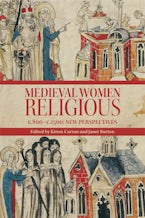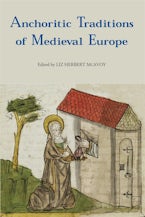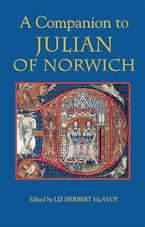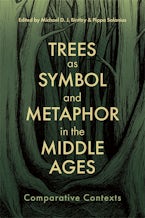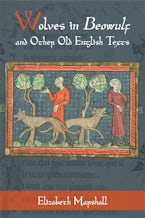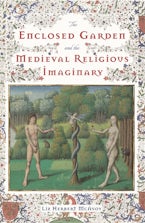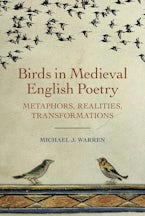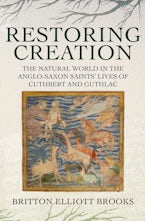
Title Details
407 Pages
23.4 x 15.6 cm
6 b/w illus.
Series: Nature and Environment in the Middle Ages
Series Vol. Number:
4
Imprint: D.S.Brewer
The Enclosed Garden and the Medieval Religious Imaginary
- Description
- Contents
- Author
- Reviews
During the Middle Ages, the arresting motif of the walled garden - especially in its manifestation as a sacred or love-inflected hortus conclusus - was a common literary device.
During the Middle Ages, the arresting motif of the walled garden - especially in its manifestation as a sacred or love-inflected hortus conclusus - was a common literary device. Usually associated with the Virgin Mary or the Lady of popular romance, it appeared in myriad literary and iconographic forms, largely for its aesthetic, decorative and symbolic qualities.
This study focuses on the more complex metaphysical functions and meanings attached to it between 1100 and 1400 - and, in particular, those associated with the gardens of Eden and the Song of Songs. Drawing on contemporary theories of gender, gardens, landscape and space, it traces specifically the resurfacing and reworking of the idea and image of the enclosed garden within the writings of medieval holy women and other female-coded texts. In so doing, it presents the enclosed garden as generator of a powerfully gendered hermeneutic imprint within the medieval religious imaginary - indeed, as an alternative "language" used to articulate those highly complex female-coded approaches to God that came to dominate late-medieval religiosity.
The book also responds to the "eco-turn" in our own troubled times that attempts to return the non-human to the centre of public and private discourse. The texts under scrutiny therefore invite responses as both literary and "garden" spaces where form often reflects content, and where their authors are also diligent "gardeners": the apocryphal Lives of Adam and Eve, for example; the horticulturally-inflected Hortus Deliciarum of Herrad of Hohenburg and the "green" philosophies of Hildegard of Bingen's Scivias; the visionary writings of Gertrude the Great and Mechthild of Hackeborn collaborating within their Helfta nunnery; the Middle English poem, Pearl; and multiple reworkings of the deeply problematic and increasingly sexualized garden enclosing the biblical figure of Susanna.
During the Middle Ages, the arresting motif of the walled garden - especially in its manifestation as a sacred or love-inflected hortus conclusus - was a common literary device. Usually associated with the Virgin Mary or the Lady of popular romance, it appeared in myriad literary and iconographic forms, largely for its aesthetic, decorative and symbolic qualities.
This study focuses on the more complex metaphysical functions and meanings attached to it between 1100 and 1400 - and, in particular, those associated with the gardens of Eden and the Song of Songs. Drawing on contemporary theories of gender, gardens, landscape and space, it traces specifically the resurfacing and reworking of the idea and image of the enclosed garden within the writings of medieval holy women and other female-coded texts. In so doing, it presents the enclosed garden as generator of a powerfully gendered hermeneutic imprint within the medieval religious imaginary - indeed, as an alternative "language" used to articulate those highly complex female-coded approaches to God that came to dominate late-medieval religiosity.
The book also responds to the "eco-turn" in our own troubled times that attempts to return the non-human to the centre of public and private discourse. The texts under scrutiny therefore invite responses as both literary and "garden" spaces where form often reflects content, and where their authors are also diligent "gardeners": the apocryphal Lives of Adam and Eve, for example; the horticulturally-inflected Hortus Deliciarum of Herrad of Hohenburg and the "green" philosophies of Hildegard of Bingen's Scivias; the visionary writings of Gertrude the Great and Mechthild of Hackeborn collaborating within their Helfta nunnery; the Middle English poem, Pearl; and multiple reworkings of the deeply problematic and increasingly sexualized garden enclosing the biblical figure of Susanna.
Introduction: Gardens, Landscape and the Human Imaginary
Out of Eden: The Framing of Eve
Une communion inimitable: Material Garden Hermeneutics in the Work of the Women of Mechelen, Herrad of Hohenbourg and Hildegard of Bingen
Gertrude of Helfta and Mechthild of Hackeborn: An Arboreal Imaginary of Flourishing
Relocating Mechthild's Garden Hermeneutics: The Middle English Poem Pearl
'Straightened on Every Side': Susanna's Garden Dilemma
Afterword: The Garden Hermeneutic in the Age of COVID-19
Bibliography
Index
Out of Eden: The Framing of Eve
Une communion inimitable: Material Garden Hermeneutics in the Work of the Women of Mechelen, Herrad of Hohenbourg and Hildegard of Bingen
Gertrude of Helfta and Mechthild of Hackeborn: An Arboreal Imaginary of Flourishing
Relocating Mechthild's Garden Hermeneutics: The Middle English Poem Pearl
'Straightened on Every Side': Susanna's Garden Dilemma
Afterword: The Garden Hermeneutic in the Age of COVID-19
Bibliography
Index
"The Enclosed Garden provides much food for thought for any reader interested in the intersections of medieval women's literature and history, postmodern feminist theory, and feminist ecocriticism. With each re-reading, it offers new insights and details to ponder, much like a garden itself." JOURNAL OF MEDIEVAL RELIGIOUS CULTURES
"Plates allow easy reference to certain iconographic documents... the bibliography is rich and has the merit of not being limited to the English language alone: there are also references in French and German. Overall, it is appropriate to salute a work which invites reflection by tracing new, little-explored paths, particularly in the French-speaking sphere.
Planches permettent de se reporter aisément à certains documents iconographiques... La bibliographie est riche et a le mérite de ne pas s'en tenir à l'unique langue anglaise : on y trouve également des références en français et en allemand. Au total, il convient de saluer un ouvrage qui invite à la réflexion en traçant des voies nouvelles, peu explorées, notamment dans la sphère francophone." LE MOYEN AGE
Hardcover
9781843845980
June 2021
£75.00 / $115.00
Ebook (EPDF)
9781800103078
June 2021
$29.95 / £24.99
Ebook (EPUB)
9781800103085
June 2021
$29.95 / £24.99
Title Details
407 Pages
2.34 x 1.56 cm
6 b/w illus.
Series: Nature and Environment in the Middle Ages
Series Vol. Number:
4
Imprint: D.S.Brewer


